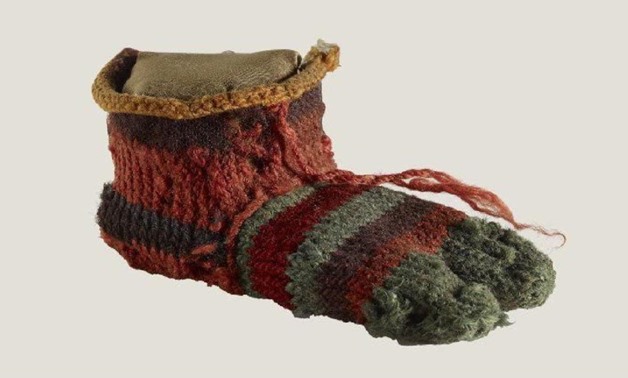
Example of an ancient Egyptian sock - ET
CAIRO - 11 December 2019: A recent British study conducted on socks of the ancient Egyptians found out the type of dye and methods of manufacturing that the ancient Egyptian used.
Archaeologists explained that Egyptian socks date back to the third or fourth century and were found by English papyrus scientist John Johnson in the period between 1913 and 1914 in the Egyptian city of Antinoopolis, according to ancient origins website.
Archaeologists indicated that using different wavelengths, color analysis revealed that the socks were made of wool yarn of seven colors woven into a striped pattern and dyed with three natural plant dyes, including red plant leaves and yellow-colored flowers.
.jpg)
The study shows how the colors were mixed to obtain the green, purple and orange shades. Also, scientists discovered that fibers of different colors were woven together and that some of the istrands have been subjected to multiple dye baths.
The Weaving Method:
Researchers believe that the discovered sock may have been worn by a child in 1700 BC, adding that the ancient Egyptians used the mono needle, which is often referred to as nalbinding, to separate the big toe from the other four toes.
The sock analysis yielded new visions of the time period in which Egypt witnessed a massive revolution that ended with the Islamic conquest of the region in the year 641 AD.
The study explained that the global events that occurred in Egypt at that time affected trade and economy. This is reflected in the artistic composition of people's clothes and the different designs they created.
.jpg)
Comments
Leave a Comment